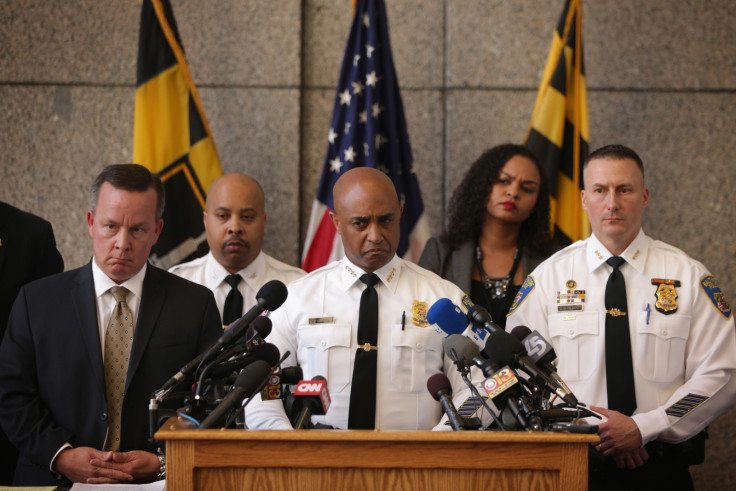Freddie Gray's death while in Baltimore police custody could have been caused by 'rough ride'

Police chiefs in Baltimore have admitted that Freddie Gray – a 25-year-old black man who died in police custody – was not wearing a seatbelt when he was in the back of the police van which was transporting him.
Asked whether Gray was fatally hurt by a so-called "rough ride", as he was not wearing a seatbelt in the back of the police vehicle, or whether he could have been injured outside the van, police commissioner Anthony Batts said at a press conference there were "potentials for both of those".
Batts confirmed that Gray, who was in leg irons, was not wearing a seatbelt in the vehicle as required by the department's policy.
"There are no excuses for that. Period," he said.
Prisoners in Baltimore have died from injuries sustained after they were around in the back of police vehicles, due to fast or erratic driving and abrupt stops, according to a Guardian report.

Arrested after running
Gray, who was black, was arrested on 12 April after he made eye contact with officers and ran away, police said. Officers held him down, handcuffed him and loaded him into the van. While inside, he became irate and leg cuffs were put on him, police have said.
Police officers held him down, handcuffed him and loaded him into the van. While inside, he became irate and leg cuffs were put on him, police have said.
Gray asked for medical help several times, beginning before he was placed in the van. After a 30-minute ride that included three stops, paramedics were called.
He died on 19 April after suffering a broken neck and injured voice box.
Police Commissioner Batts confirmed that his officers "failed to get medical attention" for Gray despite his requests for an asthma inhaler and other complaints. He also said that medics should have been called to the scene of Gray's arrest.
Mayor demands answers
Mayor Stephanie Rawlings-Blake responded by saying: "I still want to know why the policies and procedures for transport were not followed.
"I still want to know why none of the officers called for immediate medical assistance despite Mr Gray's apparent pleas.
"The one thing we all know is because of this incident a mother has to bury their child and she doesn't even know exactly how or why this tragedy occurs — only that this occurs while her child was in police custody," the mayor said. "This is absolutely not acceptable, and I want answers."
Protesters vowed to "shut down" the city by marching through the streets and snarling traffic, promising biggest march yet.
The president of a black lawyers' group predicted thousands of people would turn out for the demonstration. "Things will change on Saturday, and the struggle will be amplified," said Malik Shabazz of Black Lawyers for Justice. "It cannot be business as usual with that man's spine broken, with his back broken, with no justice on the scene."
"Things will change on Saturday, and the struggle will be amplified," said Malik Shabazz of Black Lawyers for Justice. "It cannot be business as usual with that man's spine broken, with his back broken, with no justice on the scene."
More than 63% of Baltimore City's residents are black, according to US Census data. However, African-Americans only make up 43% of the city's police force, according to figures released in 2006 (the latest figures available).
Baltimore Police Department has historically been dominated by members of members of the primarily white, Irish-American community.
© Copyright IBTimes 2025. All rights reserved.




















